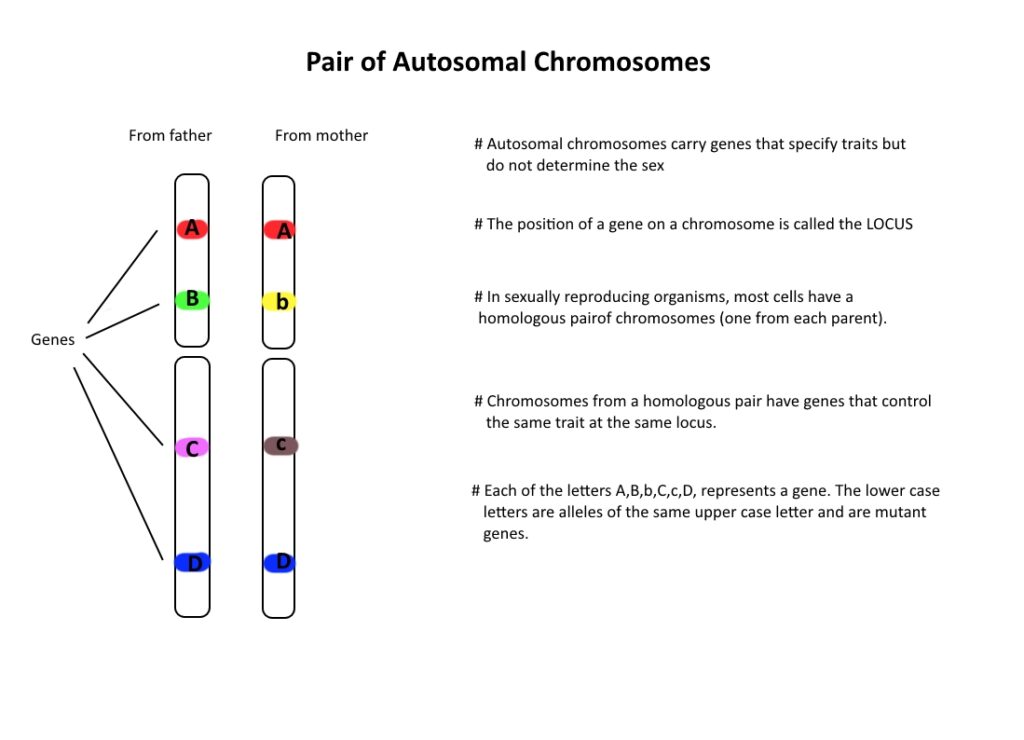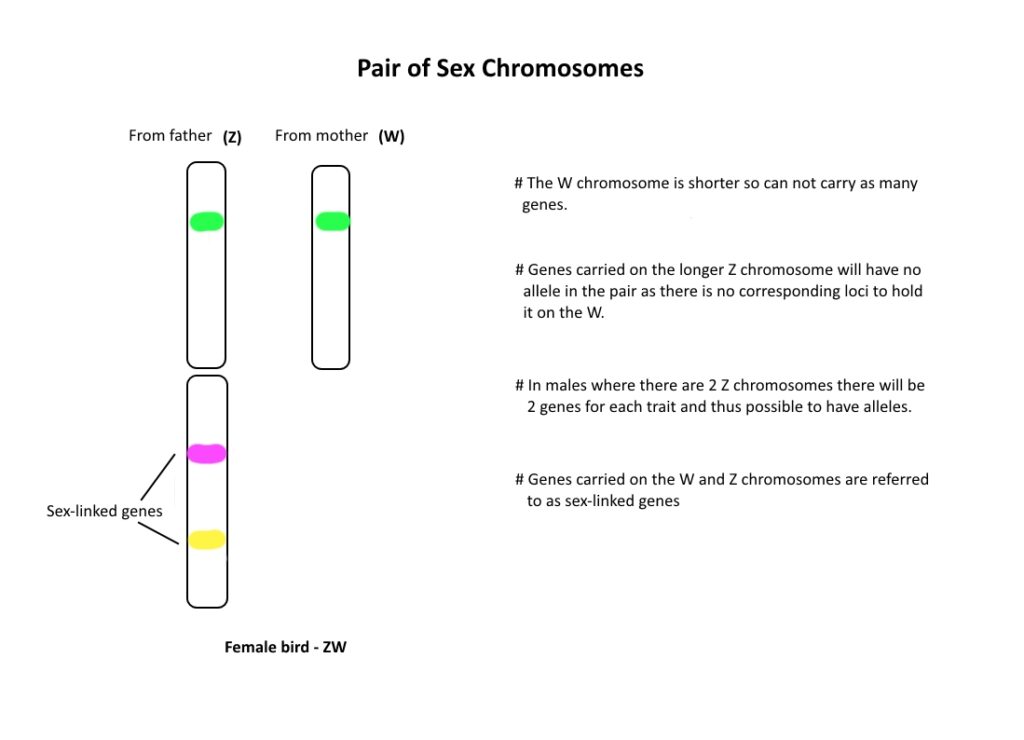Basic Genetics
How it works in simple terms
Cockatiel genetics can be quite fascinating! The genetics of cockatiels dictate their physical appearance, including color, pattern, and other traits. While cockatiels have a relatively simple genetic inheritance system, there are several mutations and color variations that make them particularly diverse in appearance.
Basic genetics in birds follows the same fundamental principles as in other organisms especially when it comes to sex determination and inheritance patterns. In this overview, we will cover the basics of genetic inheritance, sex determination, and some examples of the common genetic mutations found in cockatiels.
How Genes and Chromosomes Work
To understand how genes and chromosomes work, we need to explore their roles in genetics and inheritance. Both genes and chromosomes are fundamental to understanding how traits are passed from one generation to the next, and how organisms develop the characteristics they have. Let’s break it down step-by-step.
1. What Are Chromosomes?
Chromosomes always come in pairs and are long strands of DNA (deoxyribonucleic acid) that are found in the nucleus of cells. DNA contains all the instructions for building and maintaining an organism, like a biological “blueprint.”
Each chromosome is organized into a specific number of genes, each of which encodes for a particular trait.
2. What Are Genes?
Genes are specific segments of DNA that carry the instructions for making proteins, which then determine an organism’s traits (e.g., eye color, feather color, size). They are units of heredity and are passed from parents to offspring during reproduction.
- Genes are located on chromosomes. In fact, the chromosomes are like a library, and the genes are individual books in that library, each containing specific instructions.
- Each gene has a specific position on a chromosome, known as its locus.
3. Alleles: Versions of a Gene
Alleles are different versions or forms of a gene. Genes are segments of DNA that provide the instructions for making proteins, which in turn determine an organism’s traits (like eye color, hair color, feather color, etc.).
Each individual has two copies of each gene—one inherited from each parent—and these copies can sometimes be different from one another. When the two copies of a gene are different, the two versions are called alleles.
In simple terms:
- Alleles are variations of a gene.
- Every organism carries two alleles for each gene—one from the mother and one from the father.
The two alleles of a gene can either be the same or different, and the combination of those alleles determines how a particular trait will be expressed.
- Homozygous: When both alleles for a gene are the same (e.g., two alleles for blue eyes).
- Heterozygous: When the alleles for a gene are different (e.g., one allele for blue eyes and one for brown eyes).
4.Chromosomes and Genes in Inheritance
Inheritance refers to how genetic information is passed from parent to offspring. This happens through reproduction, and it’s driven by the segregation of chromosomes.
Humans vs. Birds (Sex Chromosomes)
In humans, males have XY sex chromosomes, and females have XX sex chromosomes. The X and Y chromosomes determine the sex of the offspring. A male passes on either an X or a Y chromosome, and the female always passes on an X.
- In cockatiels, males have ZZ sex chromosomes and females have ZW sex chromosomes. The male always passes a Z chromosome, and the female can pass either a Z or a W chromosome. The Z chromosome typically carries many sex-linked traits, and because females only have one W chromosome, the expression of these traits can be different in males and females.
Autosomes
- Apart from the sex chromosomes, humans and birds both have autosomes. These are chromosomes that do not determine sex but still carry genes for other traits, such as eye color, feather color, etc. Humans have 22 pairs of autosomes, while cockatiels (like other birds) also have autosomes that are inherited in the same way.


How Does Inheritance Work?
The process of inheritance follows certain rules based on how chromosomes are distributed during reproduction. The two main mechanisms that control inheritance are meiosis and fertilization.
Meiosis: How Gametes Are Formed
Meiosis is the type of cell division that produces gametes (egg and sperm cells). During meiosis, the chromosome number is halved, so each gamete contains only one copy of each chromosome (instead of two). This ensures that when an egg and sperm cell combine during fertilization, the resulting offspring will have the correct number of chromosomes.
- In cockatiels, a male (ZZ) will produce sperm cells that each carry one Z chromosome. A female (ZW) will produce egg cells that each carry either a Z or W chromosome. The offspring inherit one chromosome from each parent.
Fertilization: The Union of Egg and Sperm
When a sperm fertilizes an egg, the two sets of chromosomes combine, creating a new genotype (genetic makeup) for the offspring. The offspring inherit one chromosome from the mother and one chromosome from the father.
- In the case of cockatiels:
- If a Z chromosome from the father combines with a Z chromosome from the mother, the offspring will be male (ZZ).
- If a Z chromosome from the father combines with a W chromosome from the mother, the offspring will be female (ZW).
Autosomal Recessive Genes in Action
Let’s consider a practical example to understand how dominant and recessive alleles work in inheritance. It is important to note that in Australia the wild-type normal grey is dominant over all other colours. This means that on any chromosome if the normal grey gene is present at a particular loci it will hide the visual affect of whatever allele of that gene is present.
Example: Feather Color in Cockatiels
- Grey feathers (G) are dominant over Silver feathers (g).
- A cockatiel with the genotype Gg (grey feathers) will have grey feathers because the grey allele (G) is dominant over the silver allele (g).
Parental Genotypes:
- Parent 1 (Grey): Gg (gray, carrying the silver allele).
- Parent 2 (Silver): gg (silver, no grey allele).
Possible Offspring:
- Gg (grey): One grey allele from Parent 1, and one silver allele from Parent 2.
- gg (silver): Both silver alleles (one from each parent).
So, the offspring of this pairing would have a 50% chance of being grey (Gg) and a 50% chance of being silver (gg).
Sex-Linked Inheritance
As mentioned earlier, some traits are sex-linked, meaning they are carried on the sex chromosomes (X and Y for humans, Z and W for birds). In these cases, the inheritance pattern differs between males and females.
For example, in cockatiels:
- If lutino (yellow coloring) is a sex-linked recessive trait carried on the Z chromosome, a female cockatiel only needs one copy of the lutino allele (since they have only one Z chromosome).
- A male cockatiel, however, would need two copies of the lutino allele (one from each Z chromosome) to express the trait.
Reach Out To Us
Interested in adding a new feathered family member or learning more? Reach out to us by clicking on the button below.